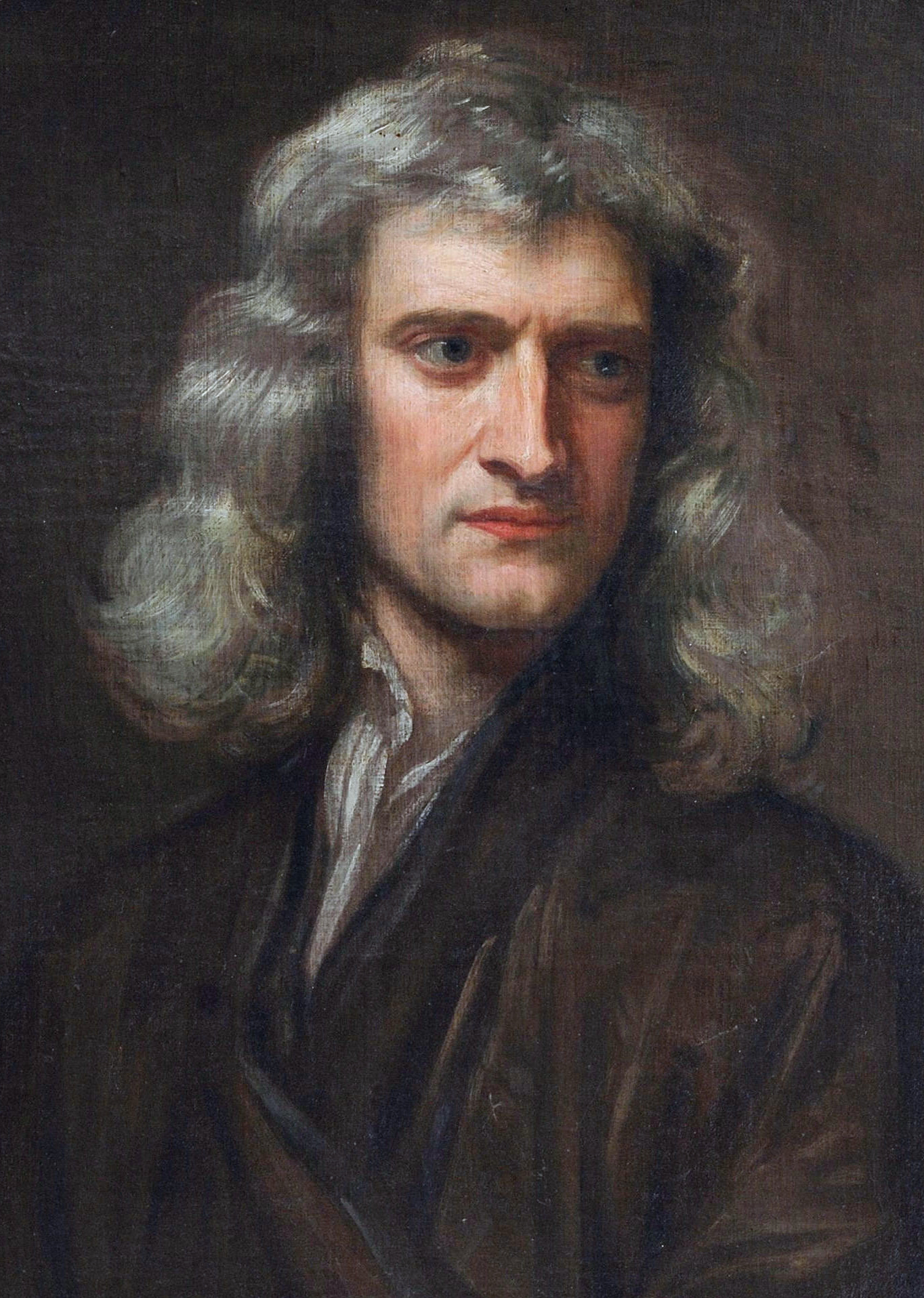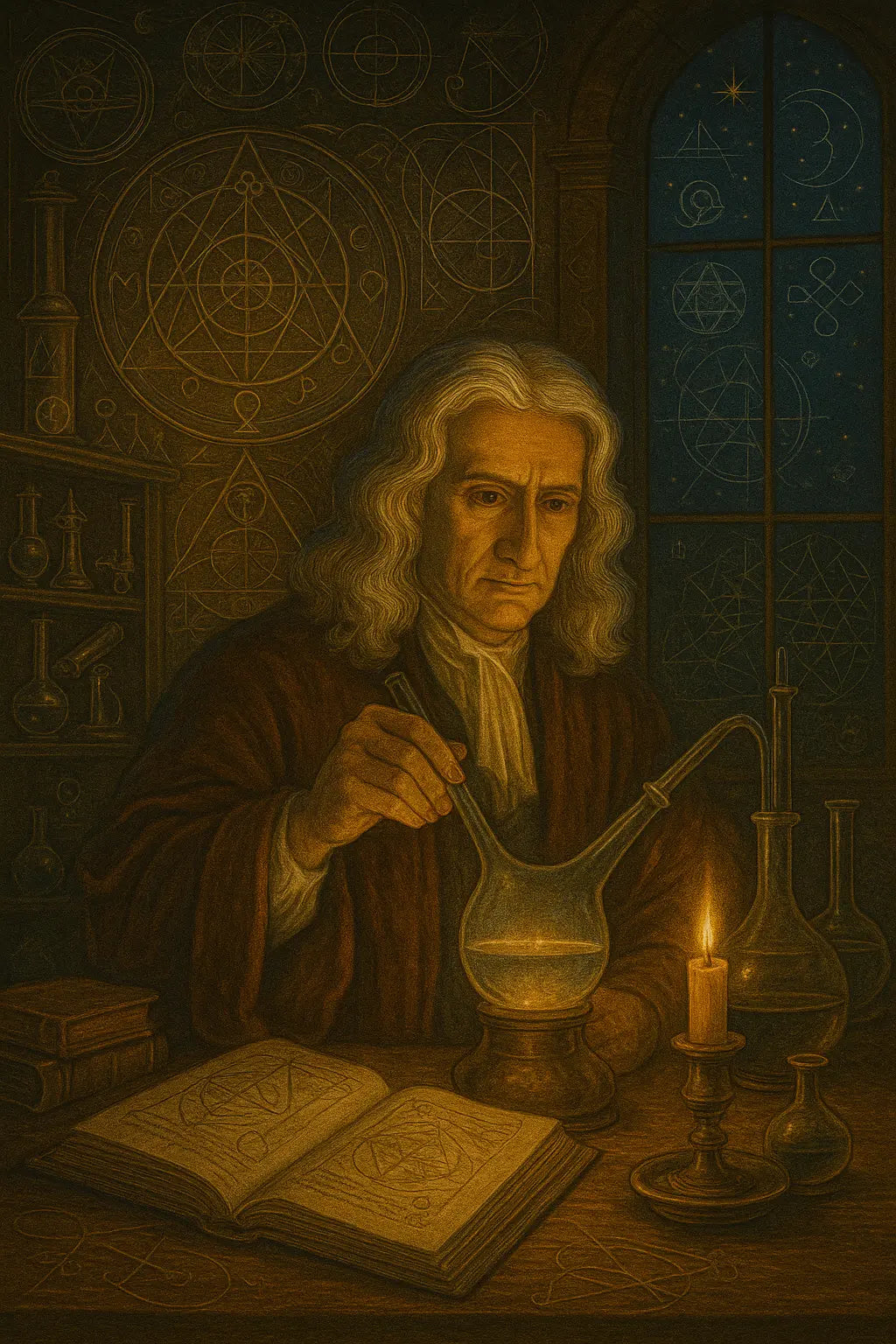Quick Answer
This article explores Newton's Alchemical Experiments: The Hidden Roots Of Science through Thalira's consciousness research framework, providing evidence-based analysis, historical context, and practical applications.
Includes: Complete overview, scientific validation, spiritual science integration, and actionable practices.
In This Article
- 17th-Century Alchemy: The Hidden Origins of Modern Science
- Newton's Alchemical Experiments & The Philosopher's Stone
- Alchemy's Influence on Principia Mathematica & Kepler's Cosmic Harmony
- Newton's Secret Research & Bacon's Scientific Method
- From Laboratory Notebooks to Scientific Revolution: Alchemy's Legacy
- How Alchemy Led to Modern Chemistry & Physics
- FAQ: Alchemy and the Birth of Science
- The Tree of Diana & Other Forgotten Alchemical Discoveries
Isaac Newton's Alchemy & the Forbidden Origins of Science
Alchemy wasn't just a medieval fantasy—it was the secret laboratory where modern science was born, hidden behind coded language and mystical symbols that concealed revolutionary discoveries from the dogmatic authorities of the time.

What if I told you that the scientific method—the foundation of our modern world—was born from alchemy, mysticism, and secret knowledge?
The same people who gave us gravity, planetary orbits, and the scientific method were deeply involved in decoding biblical prophecies, communicating with angels, and searching for the philosopher's stone.
This hidden connection between science and the mystical arts challenges everything we think we know about how modern science began.
17th-Century Alchemy: The Hidden Origins of Modern Science
When we think of the Scientific Revolution, we picture rational men breaking free from superstition and religion.
But this narrative is woefully incomplete.
The truth is much more fascinating—and I've spent years uncovering these hidden connections that transform our understanding of scientific history.
Isaac Newton, Johannes Kepler, and Francis Bacon—the giants whose shoulders we stand on today—were deeply immersed in alchemy, sacred geometry, and esoteric Christianity.
They didn't see science and spirituality as opposing forces—they saw them as two paths to the same ultimate truth.
This integration of empirical observation with sacred knowledge created the perfect alchemical vessel from which modern science emerged.
Newton's Alchemical Experiments & The Philosopher's Stone
I've always been fascinated by how history sanitizes its greatest minds, stripping away anything that doesn't fit the prevailing narrative.
Newton's case is perhaps the most striking example of this historical whitewashing.
Few people realize that Newton spent more time studying alchemy and biblical prophecy than he did on the physics he's known for.
When he wasn't calculating gravitational forces, he was performing alchemical experiments in his secret laboratory at Cambridge.
After his death, over a million words of his esoteric writings were hidden away—deemed too embarrassing for the rational image of science's founding father.
But these weren't the scribblings of a madman—they were the work of a brilliant mind exploring all avenues of knowledge available to him.
Newton believed the architecture of Solomon's Temple contained a divine model of the cosmos, with the central altar representing the sun in our solar system and the surrounding courts symbolizing planetary orbits.
His obsession with ancient measurements, particularly the "sacred cubit," wasn't random—he thought these measurements held the key to unlocking biblical prophecy and the timing of the apocalypse.
In his private writings, Newton used coded language like "green lion" and "two serpents" to describe alchemical processes in his quest for the philosopher's stone and the elixir of life.
What's truly remarkable is how Newton's mystical worldview directly influenced his scientific theories.
His concept of gravity as an invisible force acting at a distance—criticized by contemporaries as "magical thinking"—was rooted in his alchemical understanding of hidden energies and correspondences in nature.
Even his masterwork, the Principia Mathematica, contains subtle theological elements, describing absolute space as "the sensorium of God"—suggesting a mystical link between the divine and physical universe.
Get Weekly Consciousness Insights
Join thousands receiving sacred wisdom, practical exercises, and exclusive content.
Subscribe FreeNo spam. Unsubscribe anytime.
Alchemy's Influence on Principia Mathematica & Kepler's Cosmic Harmony
Johannes Kepler, who discovered the laws of planetary motion, was driven by a search for divine harmony in the cosmos.
I'm always struck by how his scientific breakthroughs came directly from his mystical worldview, not in spite of it.
Kepler believed the universe was designed according to geometric principles that reflected the mind of God.
In his work "Mysterium Cosmographicum," he proposed that the orbits of the six known planets fit between the five Platonic solids—geometric forms considered sacred since ancient times.
When observations didn't match his beautiful theory, Kepler made a crucial choice that separates him from mere mystics: he followed the evidence.
This led to his discovery that planets move in elliptical orbits, not perfect circles.
Yet even then, Kepler didn't abandon his spiritual vision.
In "Harmonices Mundi"—The Harmony of the World—he calculated that the planets' orbits created mathematical ratios corresponding to musical notes, literally creating a "music of the spheres."
Kepler wrote:
"We are merely apes of God, acting out a drama of the celestial movements."
Though we remember Kepler for his scientific laws, he was also a professional astrologer who made weather predictions and political forecasts based on planetary aspects.
He rejected much of traditional astrology but sought to reform it through mathematical principles—another example of integration rather than rejection.
Newton's Secret Research & Bacon's Scientific Method
Francis Bacon, the father of the scientific method, was widely believed to have been connected to Rosicrucian and Masonic traditions.
I've traced how his vision for a scientific society directly mirrored esoteric brotherhood structures.
His utopian work "The New Atlantis" describes an ideal society centered around "Solomon's House"—a scientific institution bearing the name of the biblical king associated with occult wisdom and secret knowledge.
The parallels between Solomon's House and the Rosicrucian "Invisible College" are striking:
- Both were brotherhoods dedicated to knowledge
- Both sought to understand nature's hidden laws
- Both refused payment for healing
- Both maintained secrecy about certain discoveries
Bacon's approach to science retained magical elements even as it pioneered empiricism.
When he wrote that "nature must be bound into service" and "put in constraint," he was using language that echoed Renaissance magical practices, where practitioners sought to command natural forces.
The scientific method itself—with its emphasis on controlled experiments—has roots in alchemical procedures where practitioners carefully isolated variables and recorded results.
From Laboratory Notebooks to Scientific Revolution: Alchemy's Legacy
What makes these figures so remarkable is that they stood at the crossroads between two worldviews.
They combined rigorous observation with mystical insight, creating a bridge between ancient wisdom and modern science.
They didn't reject spiritual knowledge—they integrated it with empirical methods to create something new.
I see their work as a form of intellectual alchemy, transmuting esoteric knowledge into scientific gold.
The Scientific Revolution wasn't a clean break from mysticism but a transformation of it.
Instead of seeking divine truth through scripture alone, these pioneer scientists sought it through the book of nature, believing that God's wisdom was encoded in the physical world.
Their secret alchemical studies provided crucial conceptual frameworks:
- Correspondence - The idea that patterns repeat across different scales (as above, so below)
- Transmutation - Understanding that substances can fundamentally change their properties
- Hidden forces - Accepting that invisible influences can act at a distance
- Mathematical harmony - Seeking elegant numerical patterns in nature
Without these concepts borrowed from esoteric traditions, modern science might never have emerged as we know it.
How Alchemy Led to Modern Chemistry & Physics
This hidden history matters for several powerful reasons that impact how we understand ourselves today.
First, it shows us that the divide between science and spirituality is more recent than we think.
The rigid separation we see today would have been alien to the founders of modern science.
Second, it reminds us that great breakthroughs often happen when we connect seemingly separate domains of knowledge.
Newton, Kepler, and Bacon crossed boundaries between disciplines that didn't officially exist yet.
Finally, their approach offers a model for contemporary seekers trying to integrate spiritual wisdom with scientific understanding.
Their legacy reminds us: you don't have to choose between being rational and being spiritual—the greatest minds in history were both.
I believe we're entering an era where this artificial division is beginning to heal, as more people recognize that different ways of knowing can complement rather than contradict each other.
FAQ: Alchemy and the Birth of Science
If Newton was so interested in alchemy, why isn't this common knowledge?
After Newton's death, his alchemical and theological manuscripts were hidden away and deemed "unfit to publish" by those curating his legacy.
It wasn't until the 20th century that scholars began seriously examining these works, revealing their extent and importance.
Even today, some scientific institutions remain uncomfortable with this side of Newton, preferring to maintain the image of a purely rational figure.
Was alchemy just a primitive form of chemistry, or was there more to it?
Alchemy was a complex tradition that encompassed physical experiments (proto-chemistry), philosophical principles, and spiritual practices.
Its practitioners often saw their work as both a physical process (transforming materials) and a spiritual one (transforming consciousness).
The Canadian academic community has increasingly recognized alchemy's sophisticated theoretical framework that provided conceptual foundations for early modern science.
Did these scientific pioneers actually believe in mystical ideas, or were they just using the language of their time?
The evidence from their private writings shows they genuinely held mystical beliefs alongside their scientific work.
Newton wrote extensively about biblical prophecy and alchemical transformations in his personal notebooks never intended for publication.
Kepler explicitly stated that his astronomical work was meant to reveal divine harmony.
These weren't just cultural trappings—they were integral to how these thinkers understood the cosmos.
How can I explore this connection between mysticism and science further?
I recommend starting with Betty Jo Teeter Dobbs' "The Foundations of Newton's Alchemy" for Newton's esoteric studies.
For Kepler's mystical astronomy, try "Kepler's Cosmic Mystery" by Kitty Ferguson.
Frances Yates' "The Rosicrucian Enlightenment" explores Bacon's connections to esoteric societies.
These works provide scholarly yet accessible entry points into this fascinating hidden history.
The Tree of Diana & Other Forgotten Alchemical Discoveries
The next time you hear someone claim that science and spirituality are incompatible, remember the alchemist Isaac Newton measuring the dimensions of Solomon's Temple, or the astrologer Johannes Kepler searching for divine harmony in planetary orbits.
Remember that the scientific method itself emerged from a worldview where the cosmos was alive with meaning and purpose—not just dead matter in motion.
Perhaps in rediscovering this lost connection, we can heal the split between our scientific and spiritual selves, finding a more integrated way of knowing that honors both empirical facts and deeper meaning.
I've found that wearing symbols connected to these traditions—like the Hermetic emblem or sacred geometry patterns—helps me maintain awareness of this integrated wisdom tradition throughout my day.
These aren't just historical curiosities—they're reminders of a more holistic approach to knowledge that we can reclaim today.
As inheritors of both scientific precision and spiritual insight, we stand in a unique position to reintegrate these complementary ways of understanding our universe.
By embracing both the empirical methods of science and the profound insights of ancient wisdom, we recover the alchemical tradition that gave birth to the modern world—a tradition that never truly disappeared but simply went underground, waiting to be rediscovered by those ready to receive its teachings.
Interested in exploring the intersection of ancient wisdom and modern understanding? Check out our Alchemy Collection and Sacred Geometry Clothing to carry these powerful symbols with you.
Isaac Newton Books

